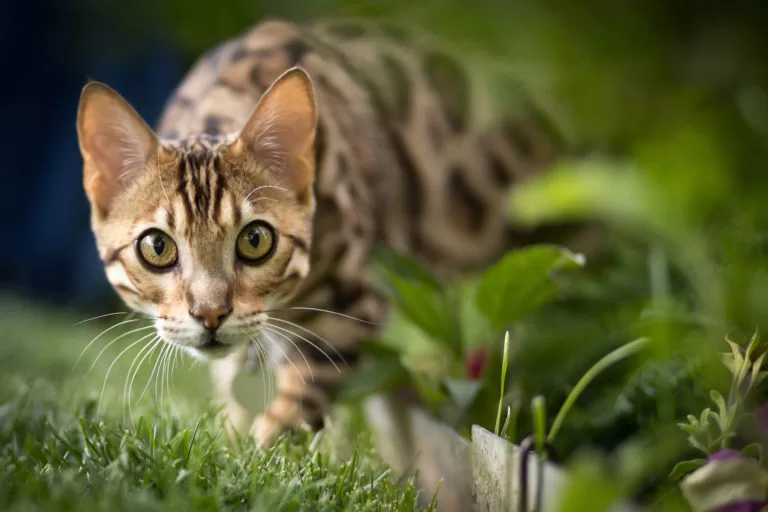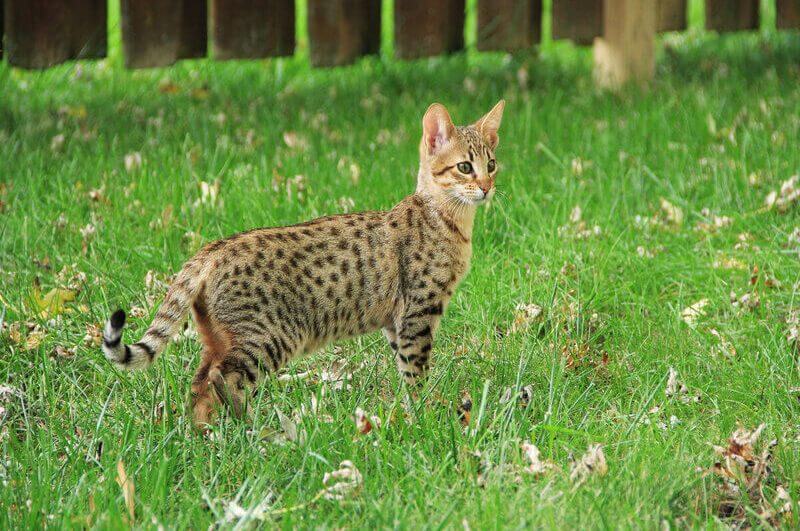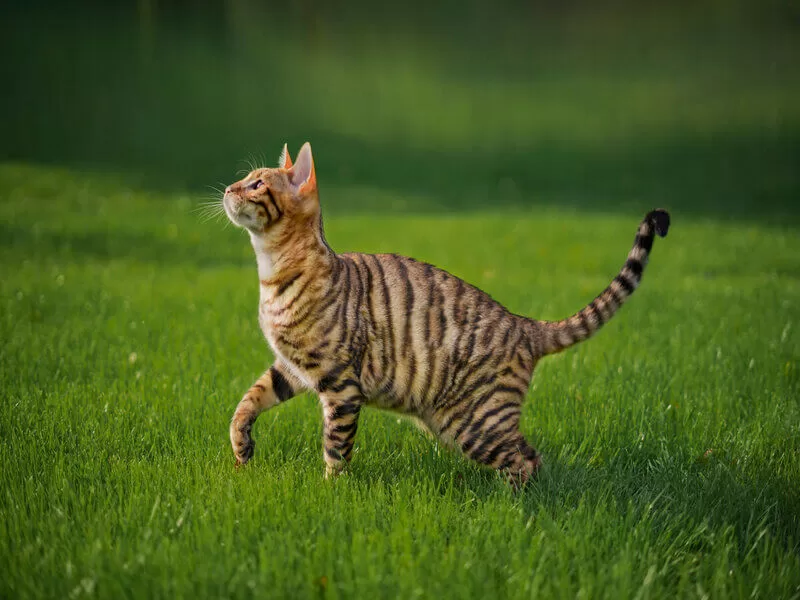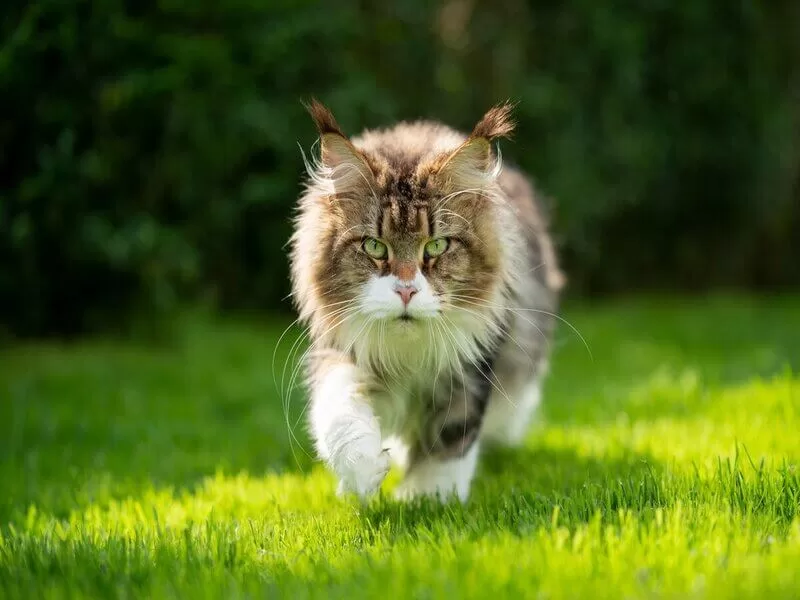Introduction to the World of Wild Cats
Have you ever stopped to think about the incredible diversity that exists in the world of wild cats? Yeah, we’re not just talking about your pet cat. There are several species of feral cats out there, each with their own unique traits and behaviors.
At the center of this environmental exploration, we find fascinating animals that go beyond what we see in photos or in Guarapuava. They are a crucial part of the natural balance and their conservation is critical to maintaining the health of our planet. Understanding more about these kittens is not just an interesting hobby, but an urgent need. Let’s go on this journey of discovery together?
Notable Characteristics of Wild Cats
Distinctive Appearance
Wildcats are a visual marvel. They have a robust physique and a thick coat that, depending on the species, varies in shades of gray, brown and yellow. Their eyes, usually green or golden, have vertical pupils that quickly adapt to changes in light. In addition, its pointed ears are wider and face forward, helping it to detect subtle sounds.

Survival Skills
- Hunting : Wildcats are natural hunters. They use ambush tactics to capture prey and have powerful paws to jump great distances.
- Camouflage : Their dense coat not only protects them from the cold but also works as perfect camouflage in the wild.
- Climbing : They are excellent climbers and often resort to trees to escape predators or observe prey from a distance.
Specific Adaptations
Wildcats have several adaptations that differentiate them from other feline species:
- Retractable Claws : This feature allows them to keep their claws sharp by avoiding direct contact with the ground while walking.
- Night Vision : They possess exceptional night vision thanks to the high concentration of light-sensitive cells in their eyes.
- Keen Hearing : The conical shape of the ears helps channel sounds directly to the eardrum, allowing them to detect even the subtlest noises.
These amazing felines are true masters of jungle survival. With their unique appearance and specialized abilities, they stand out as a stunning example of evolution in action.
Distinctive Behavior of Wild Cats
Solitary and Territorialist Characteristics
Wildcats are known to be solitary animals. They prefer to live and hunt alone rather than in groups. This behavior is a reflection of the need to protect its territory.
- Territory demarcation is done through scratches on trees or rocks, urine and feces.
- Territory size varies depending on food availability.
- Conflicts can occur when two feral cats meet, usually resolved with displays of force and intimidation.
Nocturnal Habits and Hunting Patterns
Wildcats are nocturnal animals. They spend most of the day resting and become more active at night.
- Hunting takes place mainly at dawn and dusk.
- They utilize a combination of stalking and stalking to capture their prey.
- Common prey include small mammals, birds, reptiles and insects.
Communication Between Wild Cats
Communication between wildcats is complex and multifaceted.
- The sounds emitted range from grunts to high-pitched meows to express different emotions or intentions.
- Body language also plays an important role in the communication of these animals.
- Additionally, they use visual cues (such as scratching) and odors to communicate information about their reproductive status or territoriality.
In summary, the distinctive behavior of feral cats reflects their adaptations to the harsh conditions of the wild environment. Their solitary lifestyle, specific nocturnal habits and complex communication methods are just some of the characteristics that differentiate these amazing cats from their domesticated relatives.
Wild Cat vs Wild Cat: The Differences

Physical and Behavioral Characteristics
Let’s get straight to the point. The wild cat, also known as wild cat, has an average size of 50 cm in length, not counting the tail that can reach up to 30 cm. Its coat is yellowish gray with dark stripes across the body.
On the other hand, the wild cat is larger, measuring up to 1 meter in length and its coat varies between gray and brown, with dark spots scattered throughout the body.
Behaviorally, both are solitary and territorial. However, the wild cat tends to be more docile compared to its wild cousin which is known for its aggressiveness.
Preferred Habitats
The wild cat’s habitat is generally associated with the tropical forests of South America. It prefers densely wooded areas where it can easily camouflage itself.
The wild cat inhabits a greater variety of environments. It can be found in temperate forests in Europe and Asia, but also in African savannas or Asian steppes.
common confusions
Now let’s demystify some common confusions between these two cats:
- Wild cats are not a domesticated version of wild cats.
- Despite the physical similarities, they belong to different species.
- The aggressiveness of the wild cat does not mean that it is more "wild" or less tame than the wild cat.
To simplify:
- wildcat :
- Size: ~50cm (not including the tail)
- Coat: Yellowish gray
- Temperament: More docile
- Habitat: Tropical forests
- Wild Cat :
- Size: Up to 1m
- Coat: Varies between gray and brown
- Temperament: More aggressive
- Habitat: Various (temperate forests, savannas)
This comparison clearly shows the differences between the two types of felines. Now you know how to distinguish one from the other!
New Wild Cat Species Discovered

Presentation of new species
Recently, the scientific community has been abuzz with the discovery of new species of wildcats. In recent years, researchers in different parts of the world have been finding and documenting these amazing felines.
For example:
- In Asia, a new species of clouded leopard has been identified.
- In Brazil, an unknown type of ocelot caught the attention of scientists.
- In Australia, a wild cat with distinctive markings was registered for the first time.
Details about the new species
Each of these new species has its own distinctive features that set it apart from the rest. The Asiatic clouded leopard is notable for its dark spots and size – it is smaller than known clouded leopards. The Brazilian ocelot has a lighter coat and a different pattern of spots than its closest relatives. The Australian wild cat, on the other hand, has pronounced stripes and a remarkably aggressive behavior.
These are just a few examples of the observed differences. Each new discovery brings with it a unique set of features that continue to surprise and delight researchers.
Reflections on these discoveries
The discovery of these new species is not just exciting for cat lovers or nature aficionados – it has profound implications for science as a whole. These findings reinforce the fact that there’s still a lot we don’t know about the natural world around us.
Furthermore, each new species discovered gives us valuable insights into evolution, genetics and ecology. For example, by studying the differences between the various wildcat species, we can learn more about how these animals have adapted to their specific environments over the years.
All in all, as we continue to explore and learn about our amazing planet, we can look forward to many more fascinating discoveries in the future!
Challenges Facing Wild Cats
threats to habitat
Wildcats are facing a series of challenges that threaten their survival. One of the main threats is habitat loss. As cities and towns expand, wildcats’ natural habitats are destroyed to make way for homes and roads. In addition, intensive agriculture and deforestation also contribute to this habitat loss.
- Urbanization
- intensive agriculture
- Deforestation
Human Impact
Another major challenge for wildcats is the direct human impact. Illegal hunting is a serious problem in many places, with cats being killed for their fur or simply for fun. Climate change, driven by human activity, is also affecting wildcat habitats, making them less suitable for these animals to survive.
- Illegal hunting
- Climate changes
Coexistence between Humans and Wild Cats
Coexistence between humans and feral cats can be difficult, but not impossible. It is essential to educate people about the importance of these wild animals and how we can live in harmony with them. For example, measures can be taken to protect wildcat habitat or create safe corridors for wildcats to move between safe areas.
- Public education
- Habitat Protection
- Creating safe corridors
In conclusion, while there are many challenges facing feral cats, there are also many possible solutions that could help secure the future of these important predators.
The Status of Endangered Wild Cat Species

Species at Critical Risk
Let’s cut to the main point: the plight of wildcats is worrisome. Some species are on the verge of extinction, such as the wild cat and the jaguar. The reasons? Habitat destruction, poaching and climate change.
- The little wild cat , found primarily in South America, faces significant threats due to habitat loss caused by deforestation.
- The jaguar is critically endangered mainly because of illegal hunting.
These are just two of many species struggling for survival. Each has its own unique battle against extinction story.
Global Efforts to Protect
But it’s not all bad news! There are ongoing global efforts to protect these rare cats. Organizations such as the World Wildlife Fund (WWF) and the International Union for Conservation of Nature (IUCN) are working tirelessly to preserve these species.
- WWF has several projects focused on conserving habitats and combating illegal hunting.
- The IUCN constantly monitors populations of these species, providing up-to-date data on their status.
These efforts are vital, but it’s important to remember that we can all do our part!
Public Awareness: A Crucial Role
Public awareness is key in this fight to preserve wildcats. Why? Simply because the more people who know about this critical situation, the greater the pressure on governments and companies to act.
Imagine if every person did something small – whether it’s sharing information on social media or making a donation to an organization dedicated to wildlife conservation. This could have a huge impact!
You can’t stand still in this situation, right? So let’s protect our amazing wildcats together!
Conclusion: The Fascination with Wild Cats
Once you delve into the fascinating world of wildcats, it’s clear that these creatures are a wonder of nature. With their remarkable characteristics and distinctive behavior, each species has something unique to offer. The discovery of new species only reinforces the incredible diversity of these animals.
However, not everything is perfect. Many feral cats face significant challenges, including the threat of extinction. It is our responsibility to care for these animals and protect their future.
Now it’s up to you! Use the knowledge you’ve gained here to become an advocate for feral cats. Share the information you’ve learned and help raise awareness of these amazing species.
FAQ
What are some notable characteristics of wildcats?
Wildcats have several notable traits, such as their perfect camouflage that helps them blend in with their surroundings and their keen senses that make them excellent hunters.
What is the difference between a wild cat and a wild cat?
Although often confused, there are important differences between the two. Wild cats are generally larger and more aggressive than wild cats.
Are there new wild cat species being discovered?
Yes! New wildcat species are being discovered regularly, which goes to show how little we still know about these fascinating animals.
What challenges do wildcats face?
The main challenges facing wildcats include habitat loss, poaching and climate change.
How can I help with the conservation of wild cats?
There are several ways to help with the conservation of feral cats. One is by supporting organizations dedicated to protecting these animals. In addition, you can also educate others about the importance of conserving the natural habitats of these cats.
External Links:

